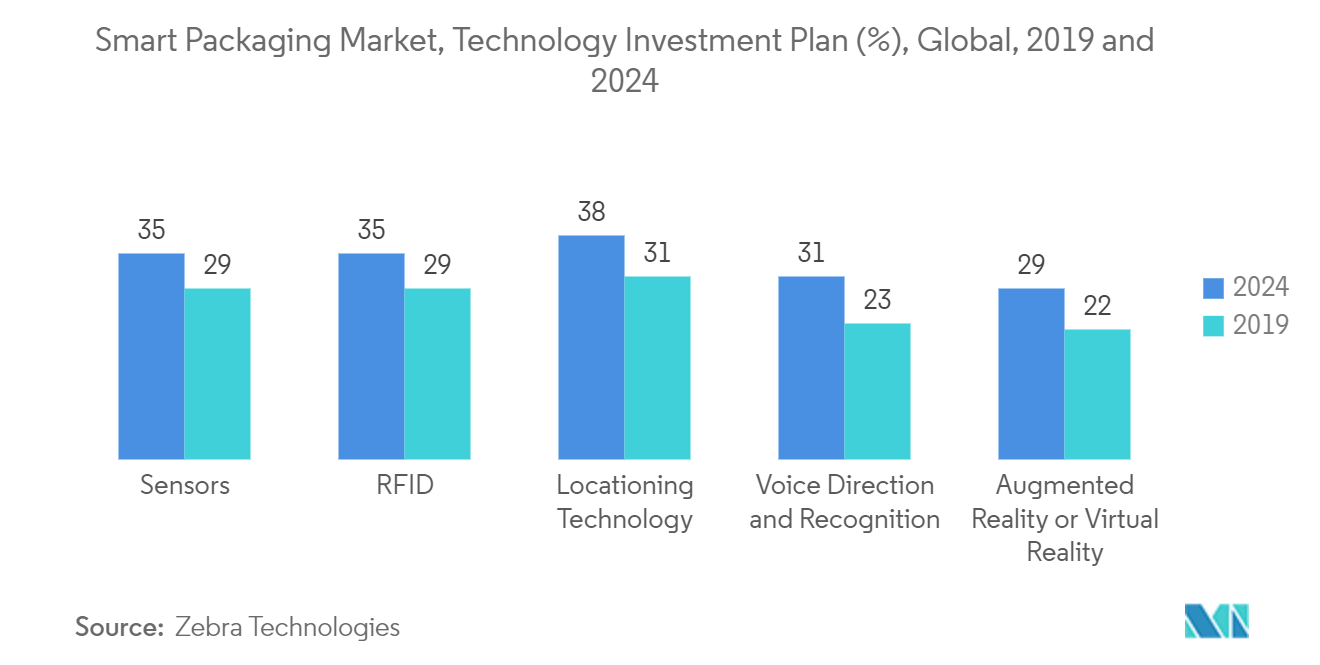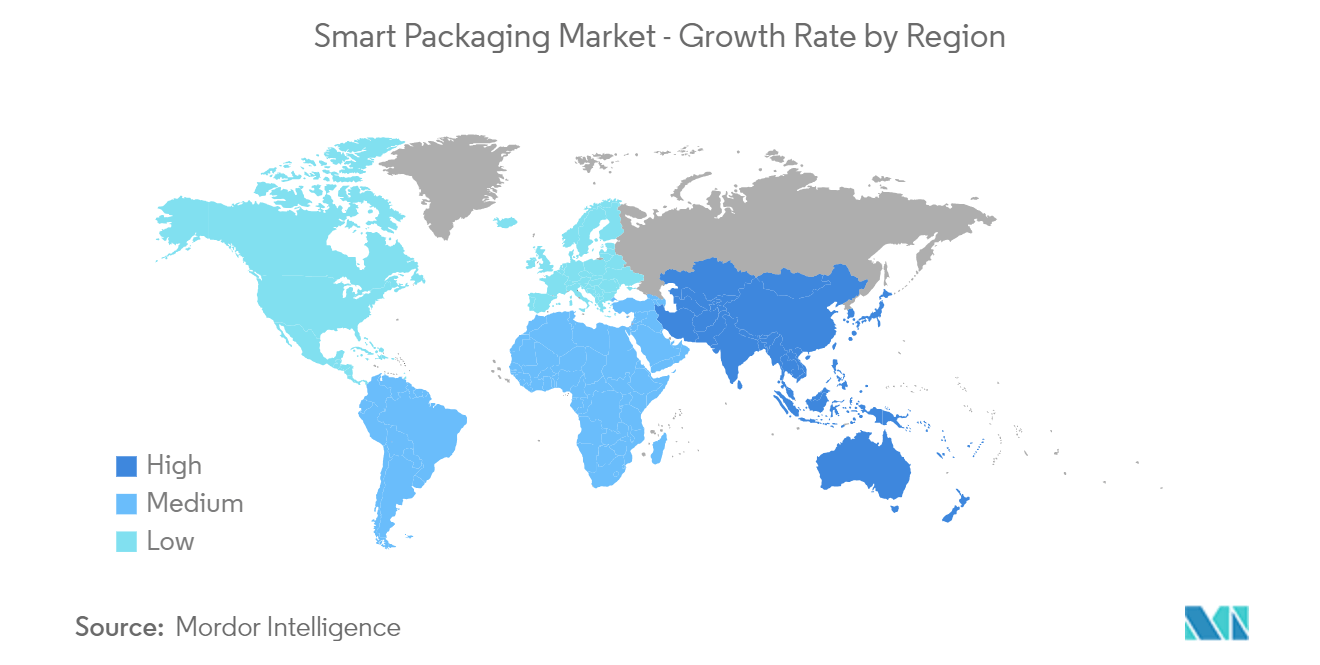Market Trends of Smart Packaging Industry
Active Packaging to Hold Major Share in the Market
- Active packaging does more than contain and protect the product. It interacts with the contents of the package to enhance freshness or extend shelf life. The packaging includes added or removed ingredients to adjust conditions such as humidity, oxygen levels, odors, and flavors. Active packaging is mainly used for food and beverages.
- Active packaging works by placing the active element inside the package. A small packet, envelope, or label is placed inside the package with the product. This can, for instance, release antibacterial agents to slow the spoilage process or remove oxygen to keep food from spoiling. Another way active packaging works is by incorporating active elements into the packaging material by extrusion, lamination, or printing. This mechanism is more appealing to consumers as there are no confusing or odd items on the packaging.
- Active packaging technology builds on the traditional concept of packaging by adding functionality to the packaged product, adapting its mode of action to the protective function and needs of the product, and going beyond mere containment, protection, and transmission to limit destructive processes. Active packaging, therefore, offers a new approach to reducing food waste and loss during increased demand in the supply chain while maintaining current manufacturing systems.
- Furthermore, increasing demand for security and tracking solutions drives growth for the active and intelligent packaging market. For instance, RFID tags provide the ability to identify, control, and manage the food supply chain. These are more advanced, reliable, and efficient for food traceability than conventional barcode tags. RFID tags for monitoring the products' temperature, relative humidity, pressure, pH, and light exposure are already available on the market, aiding in enhancing food quality and safety. In April 2022, major worldwide food chain Chipotle Mexican Grill started exploring RFID technology to improve its inventory and traceability systems at its Chicago distribution center and roughly 200 restaurants in the greater Chicago area.
- According to the research of ZebraTechnologies, a US-based manufacturing company, by 2024, the market-leading packaging manufacturers and end users are likely to gravitate toward incorporating more comprehensive automotive solutions. According to the report, the investment in technologies, including RFID, sensors, and augmented reality, is expected to be up from 29%, 29%, and 22%, respectively, in 2019 to 35%, 35%, and 29% in 2024. In Europe, it is expected that more outbound activities may employ RFID and location technology, with more than one in five expecting to utilize it for packaging (25%), inventory management (20%), and picking (19%) by 2024.

North America is Expected to Hold Significant Market Share
- Due to favorable regulatory conditions, a growing focus on sustainability, and rising demand for active and intelligent packaging across various end-user segments, particularly the food and healthcare industries, the smart packaging market in the United States has experienced significant growth over the past few years.
- According to the Food and Agriculture Organization of the United States, in the US, an estimated 133 billion pounds of food, at a value of USD 161 billion, is wasted yearly. Efforts to reduce food waste are multifaceted, including increased diversion of food-to-food banks, education and outreach, and efforts to standardize date markings on food labels. Further, reducing food waste using smart packaging is gaining significant traction in the United States.
- Moreover, the growth of intelligent packaging in the food industry is significantly attributed to government efforts, as beyond reducing food waste or helping to ensure food safety, intelligent packaging also can track the location and condition of food. For instance, the US Department of Defense (DOD) and the Food and Drugs Association (FDA) have encouraged using RFID technology for supply chain management and tracking and tracing products requiring smart packaging.
- Canada is expected to register significant growth over the forecast period. The shift towards healthier, less processed food that has been effectively packaged to ensure safety from contamination and lengthen the shelf life indicates customer preferences towards smart packaging solutions nationwide.
- The Canadian Printable Electronics Industry Association has formed the IntelliPACK Leadership Council, in partnership with PAC, Packaging Consortium, to speed up the adoption of new intelligent packaging products and applications. The joint IntelliPACK program was launched in 2017 to drive the development and adoption of intelligent packaging enabled with printable, flexible, or organic electronics (PE).
- Further, the intelliPACK Business Network is working with organizations that can help develop the capability to enable intelligent packaging using Printable and Organic Electronics (PE) in Canada. For instance, the organizations recently made a strategic collaboration agreement with the PAC, Packaging Consortium (PAC), and intelliFLEX to facilitate the widespread adoption of active and intelligent packaging across Canada. Furthermore, the Canadian government assists industry efforts to identify environmentally sound approaches to agricultural problems that will benefit the economy and future generations.

